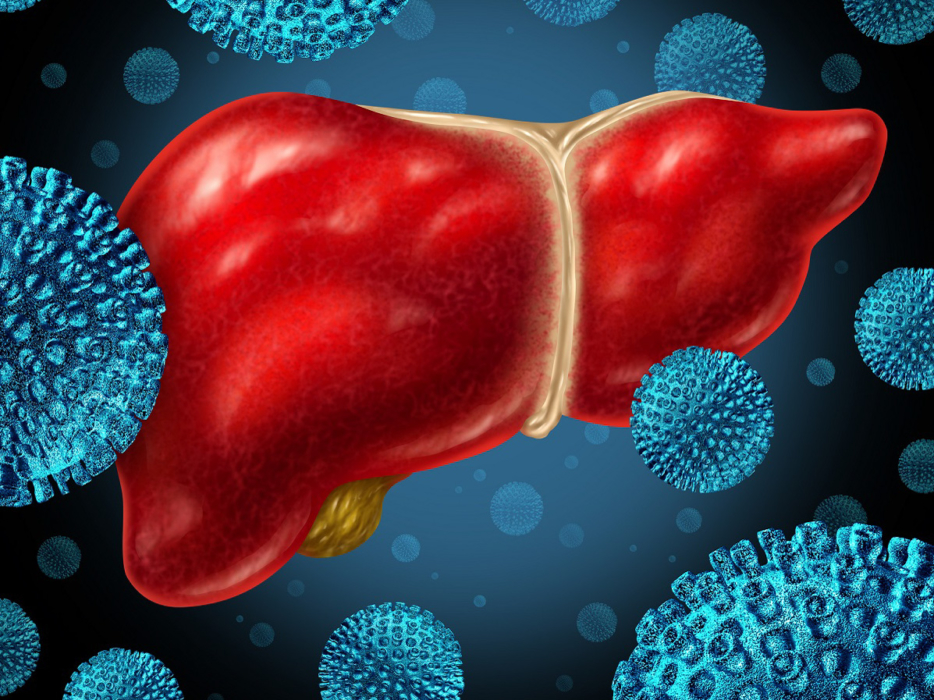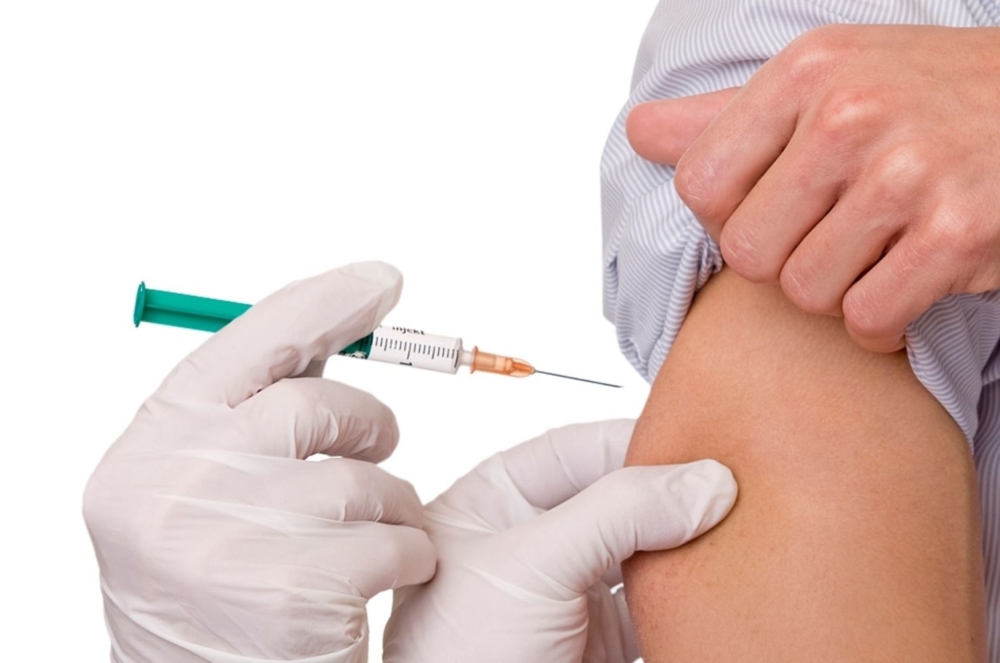One of the most common human diseases is hepatitis. Its different types are distinguished by the complexity of the course, but they are similar in one - the lack of timely diagnosis and therapy provokes liver problems. You can protect yourself from one of the varieties of this hepatic pathology by timely vaccination against hepatitis A.
Material Content:
What is hepatitis A, what is the danger of infection
Botkin's disease (other names - jaundice, hepatitis A) - a disease provoked by hepatitis A. Pathology is considered the safest and most common type of hepatitis, because it does not flow into a chronic form, does not provoke serious consequences for health. But all of the above does not indicate the harmlessness of jaundice.
Hepatitis A is characterized by damage to the liver, inflicting a notable blow to it. Most often, children 3-10 years old and young people under 30 years old suffer from the disease. The virus that causes jaundice enters water and foods through the secretions of an infected person. That is why hepatitis A is called a disease of unwashed hands. If basic hygiene requirements are not observed, the risk of infection is extremely high. A surge in disease falls between July and November.
The pathogen enters the human body through the gastric mucosa, bypassing the lymph nodes, reaches the liver through the bloodstream and affects its cells.
The incubation period of the disease lasts 7-50 days. Primary symptoms resemble an intestinal infection:
- hyperthermia;
- stomach ache;
- headache;
- diarrhea, vomiting.
A few days after the start of tracking the first symptoms, the symptoms characteristic of hepatitis appear:
- dark urine
- light stool;
- yellowing of the mucous membranes, eyes, skin.
On a note. Hepatitis A is not always accompanied by jaundice. The only symptoms of anicteric pathology are signs identical to the manifestation of an intestinal infection.
When immunization is needed
Hepatitis A vaccination is required for the following groups of people:
- Health workers, catering workers, preschool teachers and teachers of general education institutions working in the service sector.
- Minors living in an area with an increased incidence of jaundice.
- People with chronic liver damage.
In addition, mass vaccination is carried out in regions and countries where contact foci of the disease are tracked according to epidemiological indications.
Types of vaccination
There are 3 main classes of drugs for vaccination:
- Live vaccines. Their composition is weakened pathogens. The latter are not so strong as to develop a serious malaise in the patient. However, they are enough to develop adequate immunity to the disease.
- Inactivated vaccines. Contain dead bacteria (whole or parts).
- Anatoxins (toxoids). They are specially treated bacteria toxins.
Hepatitis A vaccine refers to inactivated vaccines.
And there is also active and passive vaccination. The first variety involves the introduction into the body of the vital products of the pathogen in order to provoke an immune response. Passive immunization is characterized by the introduction of special antibodies aimed at a specific antigen.
What drugs are used for children and adults
In Russia, a number of varieties of hepatitis A vaccines are applicable:
- Russian Gep-A-In-Wack;
- American Wakta;
- French aquasim
- Belgian vaccine Havrix.
A hepatitis A vaccine is given to children from 3 years old (if we are talking about a domestic vaccine). Havriks is recommended from 1 year, Vakta and Aquasim - from 2 years.
Vaccination schedule
It is permissible to combine vaccination against hepatitis with other vaccinations, excluding BCG (after it, you should wait 1 month and only then be vaccinated against hepatitis). For children under 1.5 years of age, the vaccine is administered intramuscularly in the thigh, for older patients - in the shoulder. Methods of administration subcutaneously in the buttock and intravenously are not recommended. However, blood diseases may require subcutaneous injections.
The vaccine should be given to the child 2 weeks before they attend a preschool or educational institution.
A single injection of the vaccine provides the patient with immunity to jaundice for 1-1.5 years. After the allotted time, it is recommended to undergo revaccination, after which immunity persists in almost 100% of the vaccinated over the next 20 years.
How to behave after immunization
It is useful for parents of children who have been vaccinated against hepatitis A to take a note of a few tips regarding behavior after immunization:
- Do not leave the medical institution immediately after the vaccination. It is best to sit in the corridor for about half an hour or take a walk in the air near the clinic. The parent should carefully monitor the child and consult a physician at the first sign of alarming symptoms.
- If a child has a swollen limb with a vaccine previously injected into it, if necessary, wet tissue can be applied to the problem area. If the symptom does not disappear after a day, you should consult a doctor.
- If the child has a fever, it is recommended to follow the advice of a pediatrician regarding taking antipyretics. Do not give aspirin. To normalize the temperature, you need to drink plenty of water on the child, dress easily, if necessary, dip in a bath with warm water. You can not wrap children!
- When a child becomes restless under the influence of heat or pain, you should call a pediatrician and consult about painkillers or antipyretic drugs. If a small patient does not calm down during the day, you should seek medical help.
- The child may begin diarrhea. Most often, this phenomenon is caused by microbes in the vaccine. They can irritate the intestinal mucosa. If the color of the stool becomes greenish, blood impurities are added to it, or diarrhea does not stop within a day, a visit should be made to the doctor.
- It happens that a child experiences vomiting. A single attack during the day after vaccination is normal. If a similar symptom is monitored a few days after vaccination, you need to see a doctor.
- If the child looks very sick, you should call the local pediatrician or call an ambulance.
Tip. After the occurrence of these symptoms, subsequent vaccination, you can not resort to self-medication. If after a day the alarm signs continue to be monitored, the child should immediately be shown to the doctor.
Possible complications after vaccination
Vaccination is the best prophylaxis of viral hepatitis A. The vast majority of patients tolerate vaccination against this disease. However, in some groups of patients, general and local reactions to the procedure can be monitored.
In the injection zone, the following symptoms periodically appear:
- edema;
- soreness;
- redness.
Of the general reactions distinguish:
- fatigue
- hyperthermia;
- stomach ache;
- joint aches;
- headache;
- skin rash;
- nausea, vomiting.
Usually the reactions are weak and after a short time their manifestations pass on their own. Convulsions or anaphylactic shock are extremely rare.
Contraindications to vaccination
Vaccination of adults and children against hepatitis A may be prohibited. Contraindications are relative and absolute.
Absolute contraindications:
- pregnancy;
- lactation period;
- acute reaction to past vaccination (large edema at the injection site, exceeding 8 mm in diameter, sudden temperature jumps up to 40 ° C).
A relative contraindication is the acute form of the disease. In this case, the patient should wait for a full recovery and only then go for vaccination.
Hepatitis A vaccine is the main weapon to fight liver disease. The effectiveness of the vaccine introduced into the human body is undeniable and amounts to almost 100%. In addition to providing long-term immunity, the vaccine has a small number of adverse reactions that occur quite rarely, especially if a foreign vaccine has been used. There are no other ways to prevent the disease, giving such a high guarantee of protection against the virus.

















